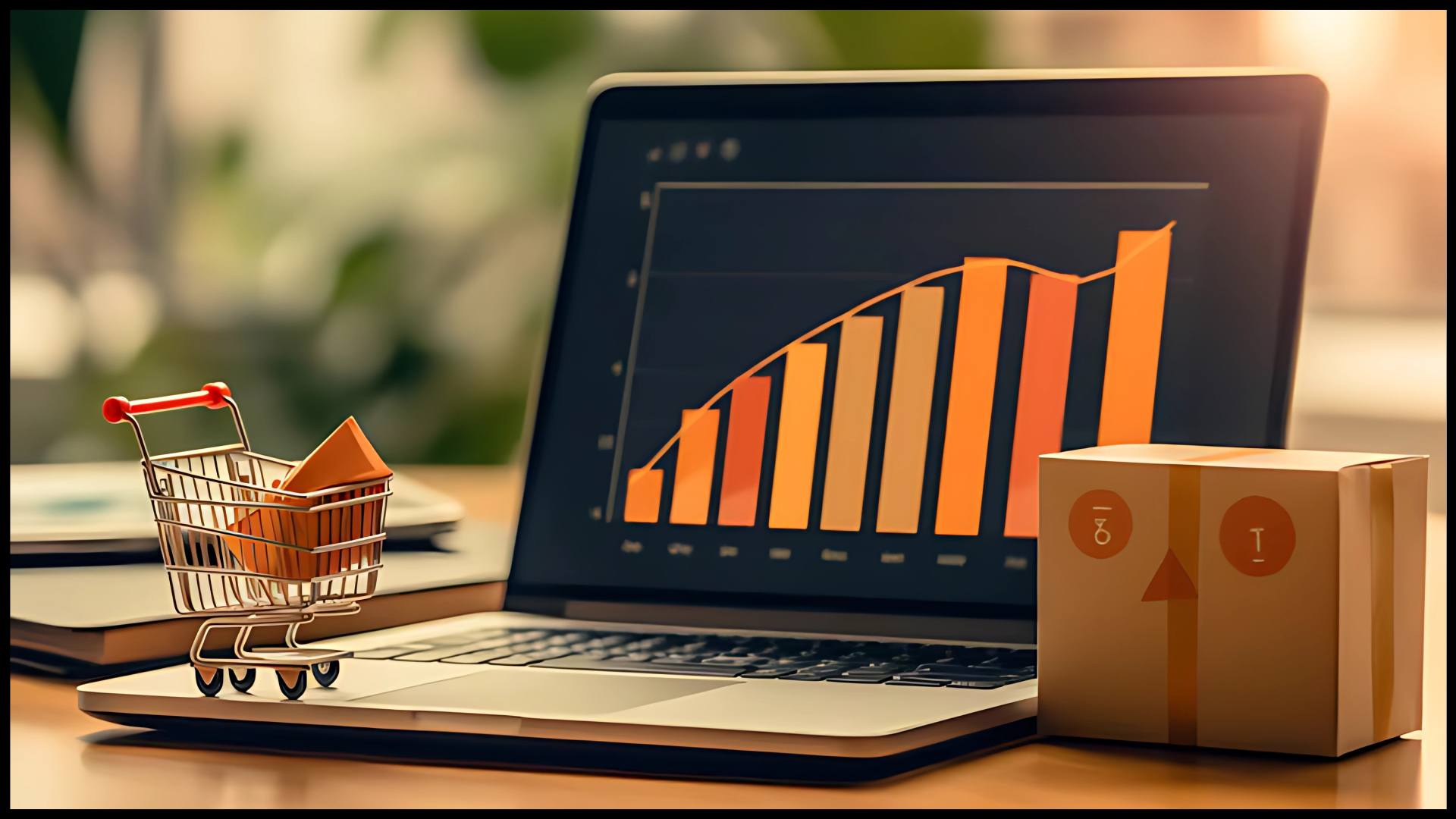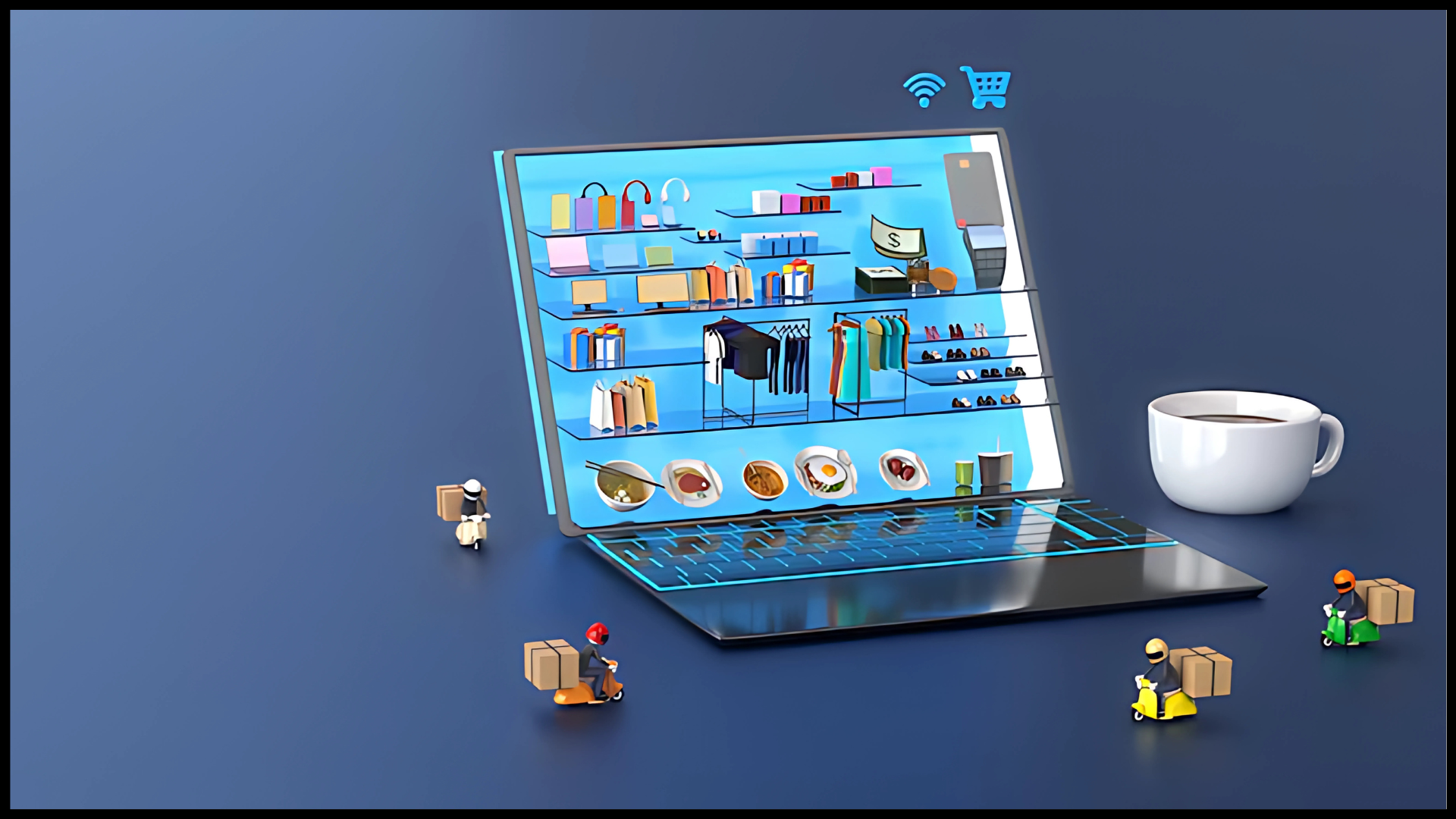- What is an ecommerce growth strategy?
- Why Are E-commerce Growth Strategies Imperative?
- What are the Components of Ecommerce Growth Strategies We Follow?
- Recommended 8 Ecommerce Growth Strategies That We Bring for Business Expansion
- Our Step-By-Step Guide to Building an ecommerce Growth Strategy
- How Our eCommerce Growth Strategy Boosted the Client’s Online Store?
- Why Choose CSSChopper as Your Trusted Partner for Ecommerce Growth Strategy
Considering that the ecommerce industry is reliant on engaging customers and keeping them hooked, having just a storefront is not enough. Assuming that the users will visit and automatically increase revenue is not the case after you get your ecommerce solutions built. It takes efficient user understanding and proper planning to present the users with viable reasons to stay loyal.
In such cases, it is always preferred to have an ecommerce growth strategy backed up. At CSSChopper, a right ecommerce development company, we work closely with brands to develop strategies that don’t just attract users but keep them loyal and convert them over time.
Our approach combines:
- User behavior analytics to understand what drives clicks, conversions, and drop-offs
- Targeted personalization to tailor content, products, and offers to individual preferences
- Performance-driven SEO to maximize organic visibility and improve page rankings
- Conversion Rate Optimization (CRO) to refine user journeys and reduce abandonment
- Omnichannel integration to create consistent experiences across web, mobile, and social
With experience across diverse eCommerce projects, we help businesses restructure their digital approach, not just their storefronts, driving scalable growth and long-term brand value. Keeping that in place, it is believed that before modifying your site’s ecommerce online front, you should understand some of the ecommerce growth strategies that allowed us to restructure business models. This way, you can get an understanding of strategies and how you can either implement them or get them implemented.
What is an ecommerce growth strategy?
An ecommerce growth strategy is a structured, data-driven plan to scale your online business by targeting sustainable sales, traffic, and customer retention. While it involves marketing, it also incorporates advanced technology, automation, conversion rate optimization (CRO), product strategy, customer lifetime value (CLTV) improvements, and operations efficiency.
Think of it as a blueprint that aligns your technology stack, user experience, and marketing efforts toward rapid and long-term business expansion. However, to understand its importance, you must also understand the difference between the generalized ecommerce marketing that is often misunderstood with data-driven e-commerce growth strategies.
| Aspect | Ecommerce Growth Strategy | General Ecommerce Marketing |
| Objective | Achieve sustainable and scalable business growth. | Increase visibility, traffic, and sales in the short to mid-term. |
| Scope | Broad – includes product expansion, customer retention, partnerships, infrastructure, and marketing. | Narrower – focuses on campaign execution, branding, and audience targeting. |
| Focus Area | Strategic planning, business model optimization, and customer lifecycle value. | Promotional strategies include SEO, PPC, social media, and email marketing. |
| Timeframe | Long-term (6 months to several years). | Short to medium-term (weeks to a few months). |
| Metrics Tracked | Customer Lifetime Value (CLTV), Retention Rate, CAC: LTV ratio, ROI from channels. | Click-through rates (CTR), conversions, impressions, traffic, ROAS. |
| Execution Level | Leadership and cross-functional teams. | Marketing department or agency. |
| Tools/Activities | A/B testing business models, market expansion, upselling/cross-selling strategies, and tech stack evaluation. | Google Ads, Meta Ads, influencer marketing, email campaigns, SEO tools. |
| Customer Journey Stage | Entire journey – from awareness to loyalty and advocacy. | Primarily, the awareness and consideration stages. |
| Examples | Launching a loyalty program, expanding to international markets, and improving fulfillment speed. | Running a holiday sale campaign, improving product page SEO, and creating social media content. |
Why Are E-commerce Growth Strategies Imperative?
For ecommerce businesses, it becomes imperative to assess their solutions and figure out a better way to overcome the challenges and limitations. Their online fronts face concerns that are worth comprehension and should be dealt with through evaluation with a web development agency. Among the many issues that e-commerce businesses face, we have mentioned a few in these pointers.
1. Increase In Competition Due to Market Saturation
With platforms like Shopify, WooCommerce, and Amazon making it easier than ever to deploy, the competition is fierce. Without focused ecommerce growth tactics, getting lost in a sea of lookalike products and generic offers is easy.
Example: If you sell fitness apparel, you’re not just competing with Nike but with hundreds of drop-shippers and DTC brands using the same stock photos.
2. Limited Data Access Caused by Privacy Regulations
With regulations like GDPR and Apple’s iOS 14+ privacy updates, third-party cookies are becoming obsolete, making it harder to track user behavior across platforms. This severely limits your ability to run hyper-targeted ad campaigns using external data.
Example:
Let’s say you previously ran retargeting ads on Facebook to users who visited your site but didn’t purchase. With post-iOS updates, many of those users now block tracking, reducing ad effectiveness. A robust e commerce business development strategy helps you shift focus to first-party data, like email opt-ins, on-site behavior, and purchase history, to deliver personalized offers via email or SMS instead.
3. Upsurging Customer Acquisition Costs
The cost of acquiring a customer via paid ads has risen dramatically in the last few years. Platforms like Google Ads and Meta now require higher bids to stay visible, often making the ROI on ads marginal, especially for low-margin products.
Example:
If your average order value is $40 and Facebook charges $20 to convert one customer, your profit margin shrinks drastically. A strong strategy for ecommerce businesses would combat this by:
- Introducing cross-sell and upsell tactics to raise AOV
- Building a subscription model for recurring revenue
- Implementing email/SMS flows to re-engage past buyers at zero extra CAC
- SKAGs (Single Keyword Ad Groups) to isolate and hyper-optimize high-performing search terms — improving Quality Scores and reducing CPC
- Dynamic Keyword Insertion (DKI) in ad copy and CTAs to boost relevance and click-through rates — e.g., “Buy {Keyword} Today!” dynamically adapts for each search query
- Segmentation and retargeting across platforms like Meta, Google, and LinkedIn to reach the right user at the right point in the funnel
What are the Components of Ecommerce Growth Strategies We Follow?
Before understanding the strategies that can upturn your ecommerce business, it is preferred to segment the different areas and components. This way, you will be able to comprehend the different portions that need to be looked after when planning the ecommerce strategies for growth.
| Component | Purpose | Key Elements |
| Customer Acquisition Strategy | Attract new customers to the store | – Paid ads (Google, Meta, TikTok) – SEO & Content Marketing – Influencers & Affiliates – Referral Programs |
| Customer Retention | Keep existing customers engaged and loyal. | – Email & SMS automation – Loyalty programs – Personalized offers – Post-purchase support |
| Conversion Rate Optimization (CRO) | Increase % of visitors who make a purchase | – A/B testing – Streamlined UX/UI – Fast checkout – Trust signals (reviews, policies) – Mobile optimization |
| Product Strategy | Ensure product mix and pricing support growth | – Product bundling/upselling – Customer feedback loop – Inventory planning – Competitive pricing |
| Technology and Infrastructure | Build a tech stack that can scale | – Scalable platform (Shopify Plus, Magento) – CRM, CDP, automation tools – Fast, secure website – Analytics integration |
| Omnichannel Strategy | Deliver a consistent brand experience across platforms | – Unified branding – Social commerce (TikTok, Insta Shop) – Mobile app/store sync – Integration with marketplaces |
| Market Expansion | Grow into new regions or customer segments | – Localized websites (language, currency) – Global shipping & logistics – Regulatory compliance |
| Data Analytics | Drive smarter decisions with insights | – KPI tracking (AOV, CLTV, CAC) – Funnel & cohort analysis – Customer segmentation – Attribution modeling |
Recommended 8 Ecommerce Growth Strategies That We Bring for Business Expansion
Now that we’ve explored structured planning and essential components of eCommerce growth marketing, let’s look ahead at future-ready strategies that are truly worth investing in. This stems from intelligent technologies and cognitive solutions that grow an ecommerce business. For better understanding, take a look at them with examples from business tycoons who benefit from them.
1. Building Immersive AR/VR-Powered Experiences
AR lets users “try before they buy, “a game-changer for fashion and furniture.
Example: Google’s Shop with AI feature lets users virtually try on products by simply uploading their photo, helping them visualize how an item (like clothing or makeup) will look on them before purchasing. This is a powerful evolution of AR/VR in eCommerce, setting new standards for personalized shopping experiences.
2. Shifting to Subscription-Based Models
Subscriptions increase predictability and CLTV. From cosmetics to pet food, it works across industries.
Example: Dollar Shave Club turned a basic grooming product into a $1B business by focusing on subscriptions.
3. Optimizing As Per Voice Search Command
Voice search is rising with smart speakers. Optimizing product content for natural language queries can improve visibility.
Example: Instead of typing “best protein powder,” users now say, “What’s the best protein powder for weight loss?”
4. Social Commerce and User-Generated Content (UGC)
Shoppable Instagram posts, influencer videos, and customer reviews boost authenticity and conversions.
Example: Glossier attributes much of its growth to customer selfies and testimonials on social media.
5. Integrating Faster Payment Options
Adding Apple Pay, Google Pay, BNPL (Buy Now Pay Later), or local wallets reduces cart abandonment.
Example: Stores offering BNPL options like Afterpay often see a 20–30% increase in checkout conversion.
6. Creating Conversational Chatbots
Ecommerce AI-driven website features like chatbots provide 24/7 assistance, reducing drop-offs and improving customer satisfaction.
Example: Sephora’s chatbot helps users pick the right makeup product by asking a series of skin-type questions.
7. Retargeting Audience With AI
Using machine learning to show the right ad to the right user at the right time boosts ROI.
Example: Showing users who abandoned a cart a time-sensitive offer on the product they left behind.
Our Step-By-Step Guide to Building an ecommerce Growth Strategy
Since we have covered the essential strategies, now is the time to comprehend how we can revolutionize your entire system. These steps we are providing you are the ones we follow to incorporate ecommerce web development trends into your business.
1. Business Audit: Analyze your current operations, tech stack, and performance metrics.
2. Goal Setting: Define SMART goals—sales, retention, traffic, AOV.
3. Audience Segmentation: Use behavioral and demographic data to build focused buyer personas.
4. Channel Prioritization: Identify the most ROI-driven channels—organic, paid, email, etc.
5. Tech Implementation: Integrate AI tools, CMS to CMS migration, CRM, automation platforms, AR/VR, and payment gateways for seamless functioning.
6. Content & UX Optimization: Update product descriptions, media, and UI/UX based on CRO analysis.
7. Testing & Analytics: Run A/B tests, monitor KPIs, and tweak regularly.
8. Retention Loop: Build loyalty programs, post-purchase email flows, and personalized offers.
This is the process of building the best ecommerce strategy and encompasses the key benefits of choosing an eCommerce development partner like us.
How Our eCommerce Growth Strategy Boosted the Client’s Online Store?
Despite decent website traffic, a fast-growing home decor brand came to us struggling with high bounce rates and low repeat purchases. They had the visitors, but not the conversions.
We stepped in with a focused ecommerce growth strategy that turned things around quickly:
- AI-powered product recommendations boosted relevance and engagement
- Loyalty program incentivized repeat purchases
- Faster checkout with PayPal & BNPL reduces friction
- Automated email flows re-engaged cart abandoners and dormant users
Results within 3 months:
- 35% increase in repeat purchases
- 28% drop in cart abandonment
- 2.5x ROI on retargeting ads using AI-based segmentation
This transformation shows that growth takes more than traffic. It takes the right tools, smart automation, ecommerce business growth strategies, and yes, the decision to hire web developers who understand what drives conversions.
Why Choose CSSChopper as Your Trusted Partner for Ecommerce Growth Strategy
So far, everything that we have mentioned has been concluded with a case study. This does bring us to reflecting on the fact that businesses need ecommerce business strategies that can be provided by expert web development service providers. Being among the leading web development companies, CSSChopper believes in delivering what is promised, future-ready solutions, hooking the users, and new revenue streams.
Being in business for a decade, we hold proficiencies with ecommerce-focused insights and experts, bringing them to life. If you are looking to modernize your business incentives and are unsure of where to begin, connect with our team and get our experts on board.
Categories
Recent Posts
Popular Posts
- How to Choose a Reliable Offshore Development Partner?
- Transforming Web Development with HTMX’s Declarative Approach for Dynamic UIs
- Why Your Conversion Funnel Needs a Composable Commerce Solution?
- How to Outsource Web Development in 2025: Complete Guide
- What are the Top Web Development Trends for 2025?




